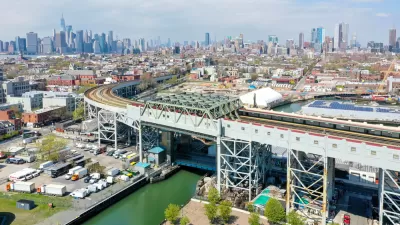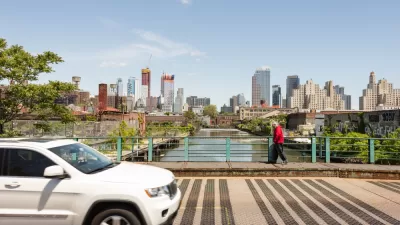An opinion piece makes the case that a rezoning proposal for the Brooklyn neighborhood of Gowanus has a higher potential for new affordable housing and lower risk of displacement compared to other rezoning plans in the city.

Michelle de la Uz, Brad Lander, and Barika Williams write an opinion piece to connect a planned rezoning for Gowanus in Brooklyn to issues of equity. By creating new opportunities for housing development, the Gowanus Neighborhood Rezoning would "move NYC forward on racial equity and fair housing," according to the opinion.
As noted in previous advocacy for the rezoning, the Gowanus Neighborhood Rezoning sticks out from rezoning plans completed during the de Blasio administration, because it would add density to a relatively wealthy neighborhood.
The proposed Gowanus Neighborhood Rezoning is the first city-sponsored neighborhood rezoning in a whiter, wealthier community. It asks those residents to absorb new growth in order to create new, permanent affordability in a high-opportunity neighborhood with strong transit access. It has far less risk of displacement. In contrast to prior rezonings, it would result in a higher percentage of affordable units in the neighborhood than exists today. For all these reasons, we have engaged in a community planning process for the last several years to try to get this rezoning right.
According to data cited in the article, the details of the proposed Gowanus Neighborhood Rezoning would allow a projected 8,200 new housing units, approximately 3,000 (37 percent) of which would be affordable: 2,000 units through the city's Mandatory Inclusionary Housing program, and another 950 units on the Public Place site, owned by the city.
As noted after the conclusion of the opinion piece, Michelle de la Uz is the executive director of the Fifth Avenue Committee, Brad Lander is a city councilmember representing Brooklyn, and Barika Williams is executive director of the Association for Neighborhood and Housing Development. The Fifth Avenue Committee recently published a report titled Undesign the Redline: Gowanus and the Association for Neighborhood and Housing Development recently published the Thriving Communities Coalition report. Both reports dig into the effects of exclusionary land use and real estate policies on the neighborhoods of New York City.
FULL STORY: Opinion: How the Gowanus Rezoning Could Push NYC Forward on Racial Equity

Alabama: Trump Terminates Settlements for Black Communities Harmed By Raw Sewage
Trump deemed the landmark civil rights agreement “illegal DEI and environmental justice policy.”

Planetizen Federal Action Tracker
A weekly monitor of how Trump’s orders and actions are impacting planners and planning in America.

Why Should We Subsidize Public Transportation?
Many public transit agencies face financial stress due to rising costs, declining fare revenue, and declining subsidies. Transit advocates must provide a strong business case for increasing public transit funding.

Understanding Road Diets
An explainer from Momentum highlights the advantages of reducing vehicle lanes in favor of more bike, transit, and pedestrian infrastructure.

New California Law Regulates Warehouse Pollution
A new law tightens building and emissions regulations for large distribution warehouses to mitigate air pollution and traffic in surrounding communities.

Phoenix Announces Opening Date for Light Rail Extension
The South Central extension will connect South Phoenix to downtown and other major hubs starting on June 7.
Urban Design for Planners 1: Software Tools
This six-course series explores essential urban design concepts using open source software and equips planners with the tools they need to participate fully in the urban design process.
Planning for Universal Design
Learn the tools for implementing Universal Design in planning regulations.
Caltrans
Smith Gee Studio
Institute for Housing and Urban Development Studies (IHS)
City of Grandview
Harvard GSD Executive Education
Toledo-Lucas County Plan Commissions
Salt Lake City
NYU Wagner Graduate School of Public Service





























